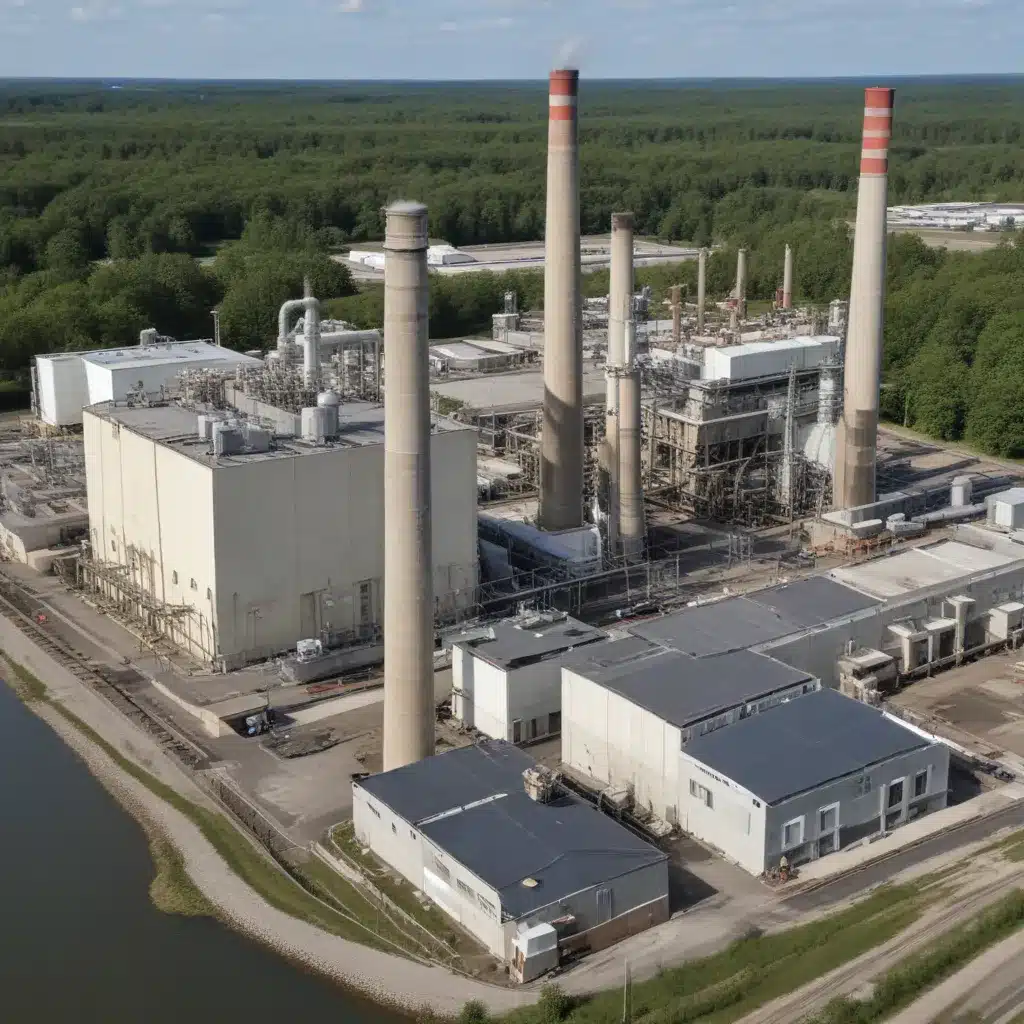
The Future of Coal Power: Addressing the Environmental and Health Impacts of the Monroe Power Plant
The Monroe Power Plant, located in Monroe, Michigan, stands as a significant player in the global energy landscape. As a seasoned expert in water and sanitation services, community engagement, and advocacy, I have closely followed the developments surrounding this power plant, and the implications it holds for the environment, public health, and the future of energy production.
The Monroe Power Plant: An Overview
The Monroe Power Plant is an operating power station with a capacity of at least 3,279 megawatts (MW), making it one of the largest coal-fired power plants in the United States. The plant’s four generating units have been in operation since the 1970s, providing a substantial portion of Michigan’s electricity needs.
However, the Monroe Power Plant has long been a source of concern due to its significant environmental and health impacts. The plant is the largest individual source of sulfur dioxide (SO2) and nitrogen oxide (NOx) emissions in the state of Michigan, contributing to the formation of fine particulate matter that can have devastating effects on human health.
The Health Impacts of the Monroe Power Plant
According to a study commissioned by the Clean Air Task Force, the Monroe Power Plant is responsible for more adverse health impacts than any other plant in the country. The study found that the plant’s emissions are linked to 278 deaths, 206 hospital admissions, and 445 heart attacks each year.
The fine particulate matter emitted by the plant, particularly particles less than 2.5 microns in diameter, can evade the lungs’ natural defenses, enter the bloodstream, and be transported to vital organs. This exposure has been shown to contribute to a range of severe health issues, including chronic bronchitis, asthma, congestive heart failure, and pneumonia, among others.
The impact of these health effects is not evenly distributed across the population. Low-income and minority communities are often disproportionately affected, as power plants tend to be located in areas that are less affluent and have less political influence to push back against such developments.
Regulatory Challenges and Legal Actions
The environmental and health concerns surrounding the Monroe Power Plant have not gone unnoticed by regulatory agencies and environmental advocacy groups. In 2010, the U.S. Environmental Protection Agency (EPA) sued DTE Energy, the plant’s operator, alleging that the company made major modifications to Unit 2 without first obtaining the necessary approvals and installing the best available technology to minimize emissions.
The lawsuit sought to shut down Unit 2 and halt further modifications until DTE complied with the Clean Air Act. The EPA also sought civil penalties of up to $37,500 per day for the alleged violations. This legal action was a significant step in holding the plant accountable for its harmful emissions and the impact on the local community.
The Shift Towards Cleaner Energy
In recent years, there have been encouraging signs of progress in addressing the environmental and health concerns associated with the Monroe Power Plant. In 2017, DTE Energy announced plans to retire the plant by 2040, a move that was welcomed by environmental advocates.
However, in 2023, DTE reached an agreement with the Sierra Club and more than 20 other Michigan organizations to accelerate the plant’s retirement timeline. Under the agreement, Units 3 and 4 will be retired by 2028, and Units 1 and 2 will be retired by 2032, significantly earlier than the previously announced 2040 retirement date.
This agreement represents a significant victory for community advocacy and a step towards a cleaner energy future. By retiring the plant’s units in a phased approach, DTE is acknowledging the pressing need to transition away from coal-fired power and move towards more sustainable energy sources.
The Role of Community Engagement and Advocacy
The progress made in addressing the Monroe Power Plant’s environmental and health impacts highlights the crucial role of community engagement and advocacy. Local organizations, environmental groups, and concerned citizens have played a vital role in pushing for change and holding the plant’s operators accountable.
Through coordinated efforts, these stakeholders have been able to raise awareness, mobilize support, and negotiate agreements that prioritize public health and environmental protection. This collaborative approach has demonstrated the power of community-driven advocacy in driving meaningful change in the energy sector.
Transitioning to a Sustainable Energy Future
As the Monroe Power Plant enters its final years of operation, the focus must shift towards a comprehensive strategy for transitioning to a more sustainable energy future. This transition must address not only the environmental and health concerns but also the economic and social implications for the local community.
Investing in renewable energy sources, such as solar and wind power, can provide new economic opportunities and job creation, while also reducing the reliance on fossil fuels. Additionally, exploring energy efficiency measures and the development of smart grid technologies can help reduce overall energy demand and minimize the need for large-scale power plants.
Conclusion: Towards a Cleaner and Healthier Future
The story of the Monroe Power Plant is a microcosm of the broader challenges facing the energy sector as it grapples with the need to balance economic, environmental, and public health considerations. Through collaborative efforts and a commitment to sustainable solutions, however, communities can overcome these challenges and pave the way for a cleaner and healthier future.
As a seasoned expert in water and sanitation services, community engagement, and advocacy, I believe that the lessons learned from the Monroe Power Plant can be applied to similar situations around the world. By fostering meaningful dialogues, leveraging scientific data, and prioritizing the well-being of local communities, we can drive the transition towards a more sustainable energy landscape that benefits people and the planet alike.
To learn more about the work being done to address water and sanitation issues, community engagement, and environmental advocacy, I encourage you to visit the Joint Action for Water website, where you can find a wealth of resources and opportunities to get involved.

